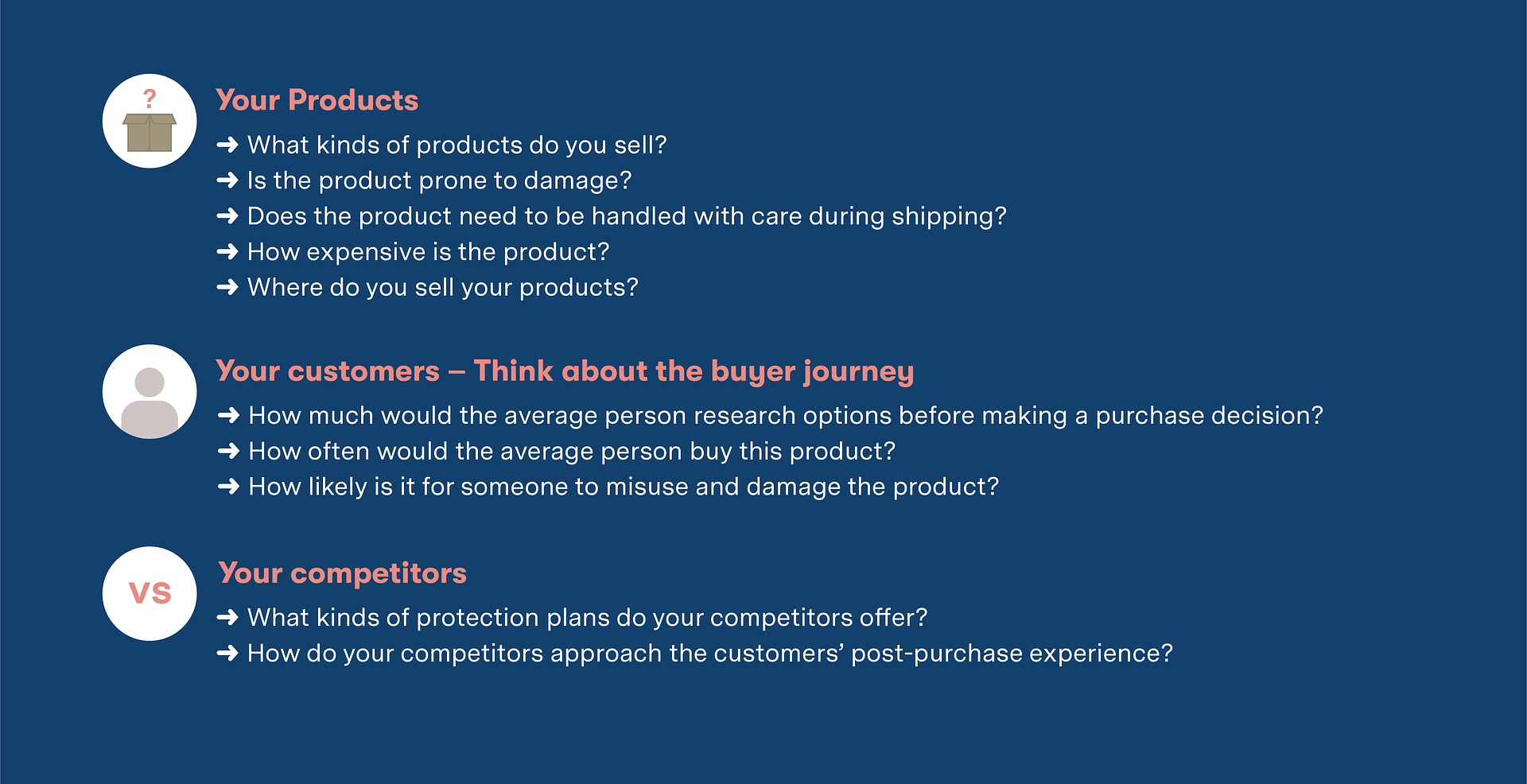Product Protection Plans: The Competitive Advantage Your Shopify Store is Missing

Every brand should stand by the products they offer their customers.
However, when people are being sold to in every direction, retailers have to find creative ways to build trust with shoppers to stay competitive.
More and more companies are opting to do this with warranty programs.
According to Allied Market Research, the extended warranty market is projected to be valued at $170 billion by 2027.
Why have warranty programs become so popular in ecommerce lately?
Because protecting products with warranty programs takes the customer’s post-purchase experience into consideration and offers them peace of mind.
What are the Different Types of Warranty Programs?
First things first, what even is a warranty program?
A warranty program (or product protection plan) is a service contract that protects shopper products from certain damages or accidents.
You can consider warranties as a type of return.
When there’s a problem with a product that is outlined in the service contract, the company will cover the cost of replacing or repairing the product for the customer.
Whether you sell on an e-commerce platform like Shopify, marketplaces like Amazon or eBay, or brick-and-mortar, protection plans help your customers trust their purchase.
There are different types of warranty programs. While the list may be lengthy, let’s dive into some of the most common kinds of consumer protection:

What’s the Point of Having a Warranty Program?
Is implementing a product protection plan worth it for your ecommerce store?
With nearly a million ecommerce stores hosted on Shopify alone, it’s important for your brand to use every tool possible to gain a competitive advantage.
Brands are competing to find new ways to deepen and personalize their relationship with their customers.
Having a warranty program adds customization to the returns process. Customers can return or replace their product and retailers can get a better understanding of how a product is performing.
Adding warranty claims as a return type for your brand will ultimately drive profits for 3 main reasons:
- More likely to attract lifelong customers: Warranty programs make a purchase feel secure, making consumers feel at ease about the post-purchase experience. According to Mulberry, nearly 50% of consumers are more likely to choose brands that offer protection plans. Just by having product protection, more shoppers are likely to convert to customers.
- Upgraded Customer Experience: Usually, a warranty isn’t put into use until there’s a problem with the product. That means a customer could feel frustrated while filing a claim. Therefore, it’s up to the company to ease that frustration by backing up their warranty and providing an enjoyable customer experience. Warranty programs give companies the chance to turn a negative experience into a positive one, keeping the brand top of mind.
- Skyrocket Profits: Handling a warranty claim puts the company back in contact with the customer. This gives them the chance to put the customer in front of other products, and potentially drive sales that otherwise wouldn’t have been made. The post-purchase experience is an opportunity to turn a customer into a repeat customer.
So, implementing a product warranty might sound like a complicated process… but that’s exactly why it’d be hard for your competitors to replicate.
Plus, it increases your brand’s connection with your customers, ultimately driving more sales and more profits.
The trouble is well worth its benefits.
A good warranty program is the exact competitive advantage your company is missing.
How do You Decide on the Warranty Program that’s Right for Your Company?
To decide on the best product protection plan for your brand, there are a few things to ask yourself:

Asking yourself these questions will put you in the right frame of mind to help you understand how a warranty can improve the returns process.
To give you a few examples:
Brands that sell products with a low purchase frequency may decide to have an extended warranty program that protects the product for another 6 months to a year after the manufacturer’s warranty expires.
Alternatively, brands that sell products that can easily get damaged during shipping may have an ADH plan that replaces parts that got chipped or damaged in delivery.
Anatomie is a Shopify store that has a great written warranty that you can check out for inspiration.

Key things to note about their warranty:
- The type of warranty is explicitly written
- Terms are concise and easy to understand
- It’s clear what is protected by the warranty
- And what needs to be done to process a claim
Ultimately, deciding on a warranty program is up to you. The different warranty types are not mutually exclusive to each other. Additionally, a warranty does not have to apply to every product you sell.
Understanding your customers’ pain points is what will make writing a warranty program a lot easier.
If you host your store on Shopify or another ecommerce platform, you can then integrate with a third-party platform, such as ReturnLogic, to enforce your warranty program.
How do You Enforce Your Warranty Program?
This is the important part, where your plan gets put into practice.
A warranty program is only as good as how a brand follows through with it.
Some things to consider when it comes to this process are:
- How does the customer go about filing a claim?
- Who oversees handling claims?
- What is the claims process from start to finish?
The answers to these questions should be detailed enough that anyone can understand exactly how your brand handles warranties without any further information.
One of the simplest ways to handle warranties is to process them as you would any other return.
This provides a quick answer to the questions above and simplifies the operations side of processing claims, lowering the chance of them being mismanaged.
This can be done easily by integrating ReturnLogic with your Shopify store or other e-commerce platform.
Using a platform like ReturnLogic makes it easier to implement warranty programs because a lot of the questions about how to collect and process claims are already answered for you.
Furthermore, this allows you to automate the process so that your company doesn’t have to worry about hundreds or thousands of emails from frustrated customers.
As the only returns management tool to support warranties as a return type, ReturnLogic will set you apart from your competitors.
To file a claim, a customer would simply have to login to the returns center using their email and order number and choose warranty as their return type.


The rest is an easy-to-follow, step-by-step process that results in the retailer receiving all the information about the customer, their order, and the reason for processing their claim.
Additionally, all this information is saved so that you can gather data on your products’ performance.
If you’re looking for a way to stand out to your audience in the growing world of ecommerce, then a warranty program is something you should seriously be considering.
Get started with ReturnLogic and learn more about warranty programs today!


